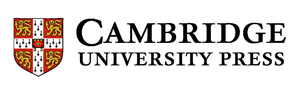Symposium S12
29 – 30 June 2017
Accreting Black holes at their extremes
Aims and scope
Although black holes have no hairs, astrophysical black holes can have many different flavors mainly depending on two quantities - their mass and the rate at which they accrete matter from the surroundings (with a third parameter, the spin, playing also an important if more subtle role).
Many similarities have been found between accreting supermassive black holes (SMBHs) in Active Galactic Nuclei (AGN) and their solar-mass counterparts in X-ray binaries (Galactic Black Hole Binaries, GBHB). In this symposium we aim to discuss the state of the art in this field with the help of the latest observational results and of the most sophisticated computational/simulation tools.
The symposium will focus on spectral and timing behavior of accreting black holes in different accretion regimes, including our own Galactic Center, Sgr A*, as an example of super-low rate accretor, Ultra Luminous X-ray Sources (ULXs), as possible highly super-Eddington sources, and Tidal Disruption Events (TDEs) as a special case of SMBHs where the accretion rate may change in short timescale. Spectral energy distributions, reverberation mapping, state transitions as well as physical processes involved in these different systems will be discussed, with the emphasis on what can be identified as common features across the range of masses and accretion rates.
Programme
- Review of observational properties of AGN, TDEs and GBHB
- Super-Eddington accretion rate sources, ULXs and TDEs
- Sgr A* and low accretion rate sources
- Study of the disk accretion flow via X-ray timing
- Physical processes in AGN and X-ray binary accretion disks and their coronae
- Emission mechanisms in TDEs
Invited speakers
- Andrea Merloni (Max-Planck Institute fuer Extraterrestrische Physik, Germany) on observational properties of AGN and GBHB
- Iair Arcavi (University of California, USA) on observational Properties of TDEs
- Matt Middleton (University of Cambridge, United Kingdom) on Super-Eddington accretion rate sources and ULXs
- Elena Maria Rossi (Leiden University, The Netherlands) TDEs as Super-Eddington accretion rate sources
- Andreas Eckart (Universitat zu Koln, Germany) on Sgr A* and low accretion rate nuclear sources
- Barbara DeMarco (Nicolaus Copernicus Astronomical Center, Polish Academy of Sciences, Poland) on study of the disk accretion flow via X-ray timing
- Bozena Czerny (Center for Theoretical Physics of the Polish Academy of Sciences, Poland) on physical processes in AGN and X-ray binary accretion disks coronae
- Sjoert van Velzen (Johns Hopkins University, USA) on emission mechanisms in TDEs
Scientific organisers
P. Arevalo (Universidad de Valparaíso, Chile),
M. Diaz-Trigo (ALMA Regional Centre, ESO, Germany),
M. Dovciak (Astronomical Institute of the Academy of Sciences, Czech Republic),
A. Eckart (Universitat zu Koln, Germany),
M. Guainazzi (ESTEC/ESA, Netherlands),
P. Jonker (SRON - Institute for Space Research, Netherlands),
E. Kara (University of Maryland, USA),
S. Komossa (Max-Planck-Institut for Radio Astronomy, Germany),
G. Matt (Università degli Studi Roma Tre, Italy),
P.-O. Petrucci (Institut de Planetologie et d'Astrophysique de Grenoble, France),
D. Porquet (Observatoire astronomique de Strasbourg),
J. Svoboda (Astronomical Institute of the Academy of Sciences, Czech Republic).
Contact
M. Dovciak: michal.dovciak @ asu.cas.cz, P. Jonker: p.jonker @ sron.nl
Updated on Wed May 24 09:14:32 CEST 2017
|

 A power cut will shut down all EAS services on Tuesday, 10 January 2017 starting at 7:30 CET.
A power cut will shut down all EAS services on Tuesday, 10 January 2017 starting at 7:30 CET.




















